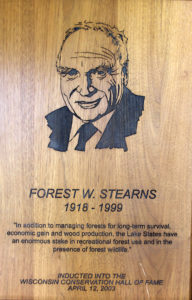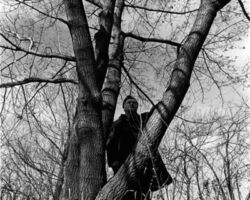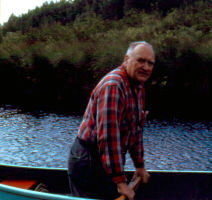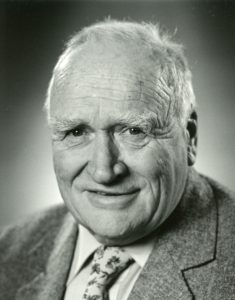1918 – 1999
Inducted 2003
“In addition to managing forests for long-term survival, economic gain and wood production, the Lake States have an enormous stake in recreational forest use and in the presence of forest wildlife.” – Forest W. Stearns
Forest W. Stearns earned recognition as a researcher, scholar, educator and ecologist. Stearns was an expert on the plant life of the Lakes States Region, and that expertise came to good use as he helped the state of Wisconsin set aside sensitive natural areas. He was a longtime member and a guiding force on Wisconsin’s Scientific Areas Preservation Council, which preserved thousands of acres of scientific areas in the state. Those efforts led to the creation of a state bureau for protection of scientific areas and helped generate interest in land preservation organizations such as The Nature Conservancy.
While at the University of Wisconsin-Milwaukee, he was among the nation’s pioneers in the field of urban ecology. Even after retirement, Stearns continued research at the U.S. Forest Service Northern Forest Research Station in Rhinelander, working on wetlands issues, ecology and forest diversity.
Born in Shorewood, Stearns was educated at Harvard and at UW-Madison. Stearns came to Milwaukee in 1968, a time when the old Milwaukee UW-Extension and Milwaukee Teachers College were merging to become UW-Milwaukee, a full-fledged university. He stayed for 19 years and was much beloved among the students he nurtured.
 The Scientific Areas Preservation Council had been created in 1951 by the Legislature. But there was little funding, so preservation of important scientific areas was difficult. The Council had to carefully consider each purchase. Colleagues credited Stearns with being the guiding voice for many of the decisions.
The Scientific Areas Preservation Council had been created in 1951 by the Legislature. But there was little funding, so preservation of important scientific areas was difficult. The Council had to carefully consider each purchase. Colleagues credited Stearns with being the guiding voice for many of the decisions.
Stearns also helped lead foresters toward an ecological perspective. In a presentation delivered at the 1987 Great Lakes Governors’ Conference on Forestry in Minneapolis, Minnesota, Stearns said this: “There has been much good work on methods of increasing forest productivity. Fewer studies have examined the interactions between forest species or the regeneration and maintenance of diverse forest stands. Ecologically oriented research is limited, especially at the landscape level.”
Stearns did extensive fieldwork and was also prolific writer, authoring or co-authoring more than 90 papers in scientific journals.
Resources
Forest W. Stearns Legislative Citation
Roy Lukes (WCHF Inductee) speech at Forest W. Stearns Induction Ceremony, 2003
Forest W. Stearns, Wisconsin Forestry Hall of Fame Inductee, Wisconsin Society of American Foresters, 2001
Forest W. Stearns – Resolution of Respect, Bulletin of the Ecological Society of America. 2000
Stearns, A Leading Ecologist, Taught at UWM, 1999 obituary by By Eldon Knoche for the Milwaukee Journal Sentinel
Distinguished Service Citation for 1979 – Forest Stearns, Bulletin of the Ecological Society of America, 1980
Photos


These images may be used under the Creative Commons Attribution-NonCommercial-NoDerivatives 4.0 International License.



